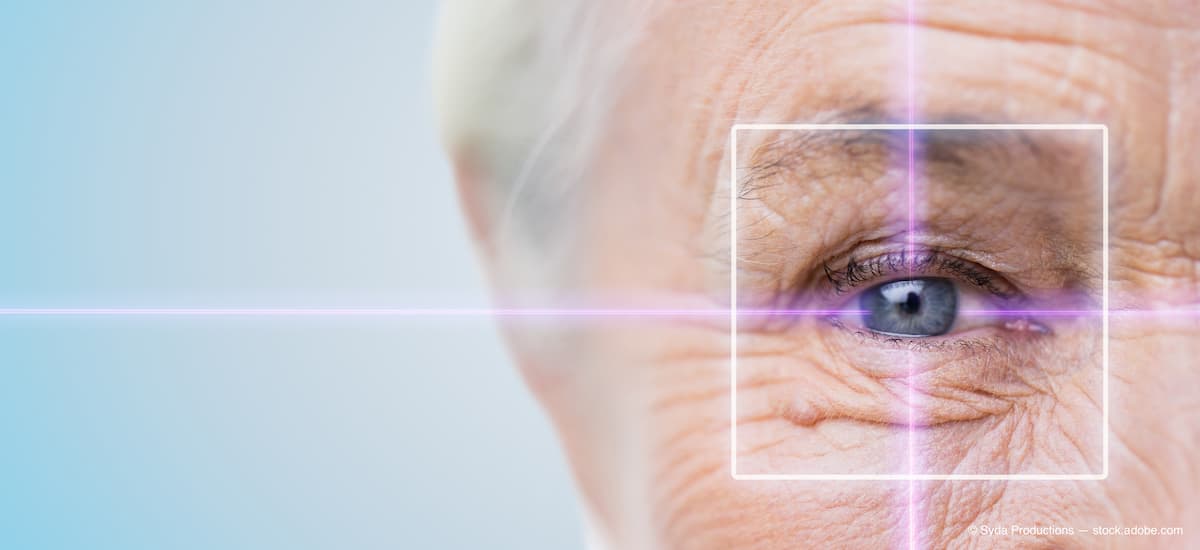FDA approves ML6710i photodynamic laser for use with VISUDYNE
Bausch + Lomb and Modulight announce the photodynamic laser for use with photodynamic therapy was approved by the FDA for the treatment of patients with subfoveal choroidal neovascularization due to AMD.

Today, Bausch + Lomb and Modulight, a biomedical laser company, announced the U.S. Food and Drug Administration (FDA) has approved the ML6710i photodynamic laser for equivalent use with Bausch + Lomb’s preparation of verteporfin for injection (VISUDYNE) photodynamic therapy (PDT) for the treatment of predominantly classic subfoveal choroidal neovascularization—or the creation of abnormal choroidal blood vessels— caused by age-related macular degeneration (AMD).1 ML6710i is expected to be available for eye care professionals during the first half of 2023.
“PDT continues to be an important treatment option for eye care professionals who are looking to treat patients with predominantly classic subfoveal choroidal neovascularization,” Christina Ackermann, president of Ophthalmic Pharmaceuticals, Bausch + Lomb, said in a press release.
“With the approval of ML6710i, eye care professionals now have a new state-of-the-art photodynamic laser that addresses a significant unmet need in PDT and is specifically designed to deliver VISUDYNE to patients who suffer from wet AMD with persistent fluid.”
ML6710i is a modern and mobile ophthalmic laser controlled intuitively from an iPad mobile application. The laser’s beam shaping unit can be fit into all common slit lamps used for eye examinations and is formed into a circular, uniform spot to provide fast treatment delivery of VISUDYNE.
VISUDYNE, an injectable photosensitizer drug indicated for the treatment of patients with predominantly classic subfoveal choroidal neovascularization due to AMD, pathologic myopia, or presumed ocular histoplasmosis is activated through use of a photodynamic laser via direct laser excitation. The delivery methods provides a targeted approach that specifically destroys abnormal choroidal blood vessels to help prevent further disease progression and help patients maintain their vision.1
In a press release, Seppo Orsila, founder and CEO of Modulight, said: “As a result of our efforts with Bausch + Lomb, along with the feedback that many eye care professionals provided to our teams, we are thrilled to bring forward an innovative cloud connected laser platform that the ophthalmology community can use to deliver VISUDYNE to patients in need of treatment of choroidal neovascularization due to AMD.”
Important safety information from the manufacturer2:
- Verteporfin for injection is contraindicated for patients with porphyria or hypersensitivity to any component of the preparation.
- Standard precautions should be taken to avoid extravasation during an infusion of verteporfin. This includes (but is not limited to):
- Establishing and monitoring a free flowing intravenous (IV) line before beginning VISUDYNE infusion.
- Utilizing the largest arm vein possible—ideally the antecubital—for injection to mitigate the fragility of some elderly patient vein walls.
- Avoiding small veins in the back of the hand.
- Extravasation of VISUDYNE can cause inflammation, swelling, severe pain, or discoloration at the injection site. Care should be taken with light exposure to the affected area if extravasation occurs as it may worsen these adverse events. If extravasation occurs, stop the infusion immediately and protect the area from light until swelling and discoloration have abated to prevent a local burn, which may be severe. A cold compress should be applied, and oral pain relief medication may be administered.
- After VISUDYNE injection, it is important to avoid exposing skin or eyes to direct sunlight or bright indoor light for 5 days. Should emergency surgery be needed within 48 hours of treatment, as much of the internal tissue should be shielded from intense light as possible.
- If the patient experiences a severe decrease in visual acuity (4 lines or more) within 1 week of treatment, they should not be retreated until their vision completely recovers to pretreatment levels. Benefits and risks of subsequent treatments should be carefully considered by the eye care physician administering care.
- Injection site reactions such as pain, edema, inflammation, extravasation, rashes, hemorrhage, and discoloration, were the most commonly reported adverse effects. These occurred in around 10-30% of patients and included blurred vision, flashes of light, decreased visual acuity, as well as visual field defects, including scotoma.
The full prescribing information can be found here.
References
1. Bausch + Lomb and Modulight announce FDA approval of ML6710i photodynamic laser for use with Bausch + Lomb’s VISUDYNE® (verteporfin for injection). Bausch + Lomb. https://www.bausch.com/news/releases/?id=139. Published February 1, 2023. Accessed February 1, 2023.
2. VISUDYNE [package insert], Bausch & Lomb Incorporated.
Newsletter
Want more insights like this? Subscribe to Optometry Times and get clinical pearls and practice tips delivered straight to your inbox.





.png&w=3840&q=75)











